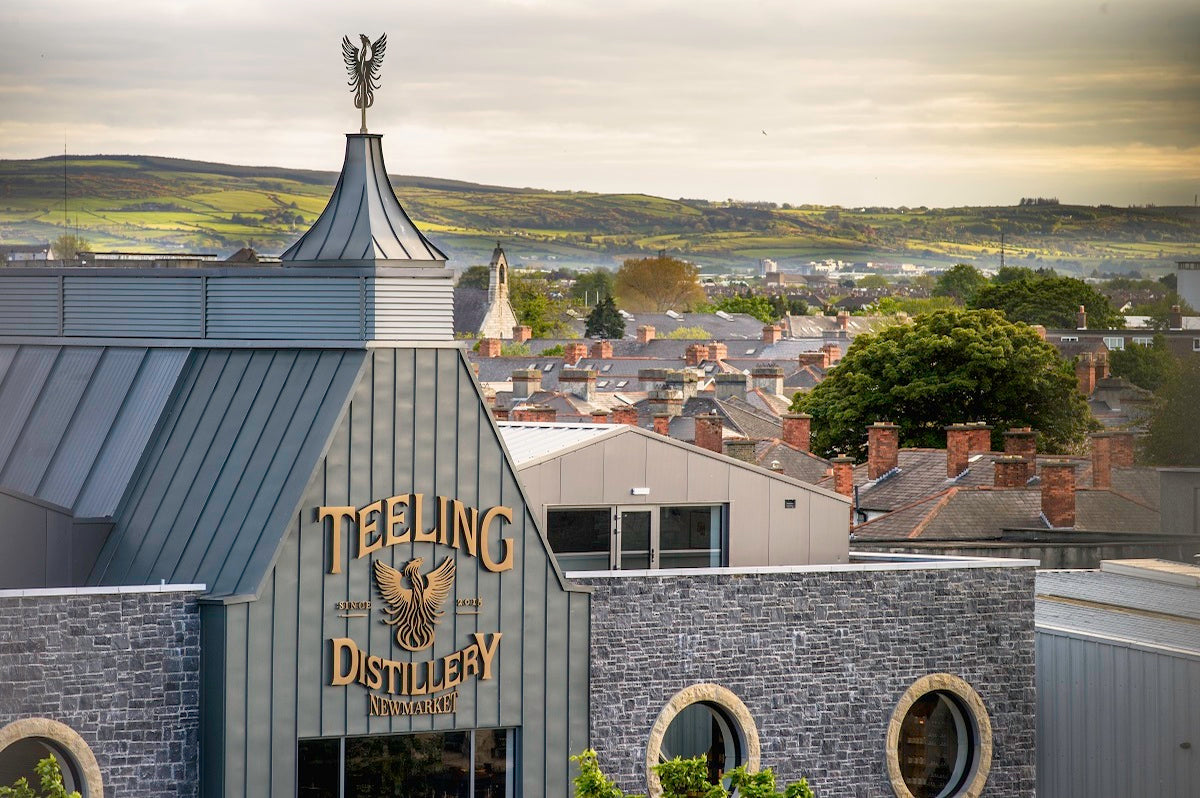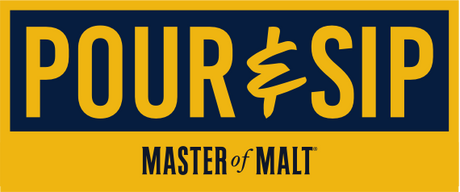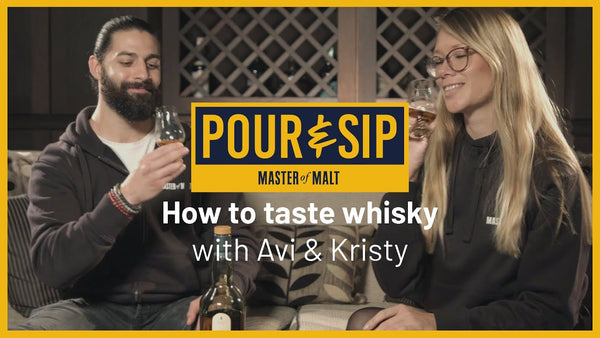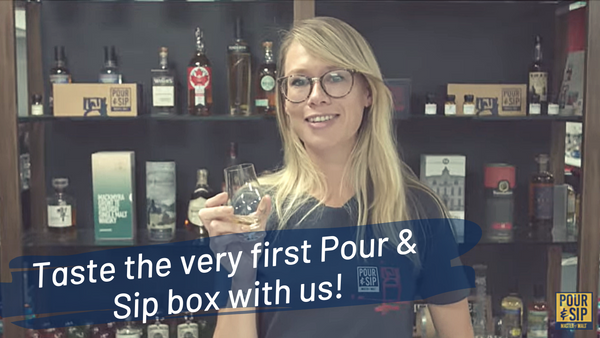We talk to Teeling global brand ambassador Rob Caldwell

Seeing as you were treated to a brilliant Teeling Irish whiskey in your September Pour & Sip box, who better to chat to for our first interview than Teeling’s global brand ambassador? Say hello to Rob Caldwell.
Teeling has certainly done its bit to put Irish whiskey on the map. For one, in 2015 it brought distilling back to Dublin for the first time in half a century with the opening of its own site. But why are we telling you all this, when we managed to grab some wonderful words from Rob Caldwell himself? Pour yourself a dram of the superbly-sherried Brabazon Series 3 whisky from September's box, sit back and learn all about the Dublin distillery!
Pour & Sip: Hi Rob! First of all, talk us through the history of Teeling – just give us a bit of background, run us up to speed!
Rob Caldwell: So the Teeling Whiskey Company is a new whiskey company, being established in 2012. But the Teeling family has its roots in Dublin, distilling as far back as 1782. Their ancestor Walter Teeling established a distillery in Dublin in 1782. That is now 500 metres down the road from where our distillery is currently located. Jack and Stephen Teeling are the guys that own and operate Teeling Whiskey Company; their father has been involved in the industry since 1987. He did his doctorate on the revival of the Irish whiskey category at Harvard Business School. He opened the Cooley Distillery, he owned and operated the Kilbeggan Distillery, and they were run by Jack for a time. And those distilleries were sold to Beam Suntory in 2011. And Jack Teeling negotiated to secure tens of thousands of barrels of maturing family stock.
The Teeling Whiskey Company was established in 2012 with some family stock from the previous distilleries, and then they began the search to build the Teeling Whiskey Distillery in Dublin. They could have easily built the distillery out in the countryside with access to farmland, access to maturation facilities, but it was far more important to Jack and Stephen to return to the rich distilling city that is Dublin. So we’re the first new distillery to be built in Dublin in over 125 years, producing the first whisky to come from Dublin in almost 50 years. The last Dublin distillery ran cold in 1976, roughly, so we are very happy for it to return to Dublin. The first whisky we released in Dublin back in 2018, after we built the distillery in 2015 - obviously you've got to wait a few years. The first hundred bottles of the first whiskey were given to local Dublin charities and Scotch whisky websites and Scotch whisky auction websites. They put them up for charity auction, and bottle number one sold for £10,000.
P&S: For years people have been saying ‘Irish whiskey is going to have its day’ – do you think we are finally in the midst of it?
RC: Oh for sure, 100%. It’s one of the fastest growing spirits categories in the world right now. Every major spirits company is reinvesting in Irish whiskey. In 1976 we had two distilleries in Ireland; in 1987 there were three. Fast forward to 2016, and there were still only about six or seven. Four short years later and we have 33! So the rise of distilleries is just booming, there’s some fabulous products coming out.
P&S: What does the future hold?
RC: So in the future, a great example is our 24 year old Irish whiskey. We took a 21 year old Irish whiskey, minimally influenced by Sauternes, and really leaned into that influence. It ended up spending three more years in Sauternes casks, so it came out a 24 year old, very minimally peated, heavily influenced by Sauternes, and it won World’s Best Single Malt at the World Whisky Awards.
It takes a bit of a gamble to take a very old whisky and move into a new cask because you have potential spillage and losses, not to mention the costs of buying in those casks and the gamble that you might not get something tasty! But that’s what we’re trying to uncover. What does a gin cask do to Irish whiskey? What does a cachaça-influenced cask do to Irish whiskey? Aquavit and vermouth and ginger beer? In the future you make a new distillate, say with Irish rye or a certain combination of malted and unmalted barley, and you distil it, and you put it into a cask and it’s missing a certain something - we’d like to know we know where to go to find that certain flavour.
P&S: Speaking of cask finishes, the whisky that was in this month’s box was the Brabazon Series 3 – could you talk us through the philosophy behind the series?
RC: So the Brabazon Family were the Earls of Meath, a small family for the area of Dublin known as The Liberties. That area was outside the walls of Dublin proper. When the English occupied Dublin they set up Dublin Castle and the area within the walls was very much considered English. Outside the walls of the Castle, there were smaller Earls and things like that. The Liberties area remained such that they didn't pay direct taxes, so they were kind of in a tax haven. It’s where the industrious areas in the city were pushed; your tanneries, your coopers, your blacksmiths, your breweries, your distilleries. They were ‘at liberty’ to do what they wanted, hence The Liberties area of Dublin. The area where our distillery is located had this Brabazon family, very impactful in the area.
The head office for Teeling is located in Brabazon House, there is a Brabazon Lane, there are a few links to that Brabazon Family - the Earls of Meath - in this area. They would have been quite prominent in the era of Dublin distilling, when it was in its first heyday. So yes, it’s a bit of a link back to that, and the flavours reflect that. In an era of pre-bourbon industry, the main cask influences that we saw in Irish whiskey were sherry and Port barrels, imported into Dublin by the wine merchants at the time.
Barrels were essentially the cardboard box of that era, and with whiskey, it didn't need to be influenced by barrels, it was more of a necessity. Breweries and distilleries exploded due to the excess of grain flooding Dublin during this time and they basically just went ‘we need somewhere to store this’. So they took the cardboard box of that era - the oak barrel. Wine merchants quickly learned the barrels that previously held Port and sherry made a far tastier whisky than barrels that previously held fish, funnily enough!
The wine merchants had a premium on these Port and sherry barrels; they knew what was tasty. That’s where the idea of Port and sherry influences comes from. And we’re paying a little bit of a tip-of-the-cap to that. The Brabazon Series features more of those traditional flavours for the whisky, and it’s the Teeling version of it.
P&S: And Series 3 specifically, what is that like?
RC: Brabazon Series expressions were originally intended to be bi-annual releases. We did one batch of Series 1, and then one batch of Series 2, and then went back to 1 and then back to 2. Alex [Chasko, Teeling's master distiller], Jack and Stephen always want to push the envelope. They were like ‘OK, so what would Number 3 look like?’ And what they did was ‘well let’s go to Jerez and let’s go to Portugal and let’s talk to a few bodegas’. They took a trip down to Jerez and found a lovely bodega that we partnered with. We came to find the lovely Pedro Ximénez (PX) Spínola casks, so these very high quality PX barrels. Alex picked up a couple of them, took them back to Dublin, put some single malts in for about 18 months and was really impressed with what came out. Ah man, it’s a really, really lovely PX-influenced Irish whiskey.
P&S So, on from the whisky, what is your story with Irish whiskey? How did you become a Teeling brand ambassador?
RC: So I grew up in Australia… I fell into bartending at 18 years old and didn't know what I was going to do with my life. Someone said, ‘stand on that door and tell people not to come in!’ And then I was like, ‘this is boring, can I go in there and pull a pint?’ And then I was a bartender. Obviously moved up, started running bars, started making cocktails, developed a love for whisky pretty early on. It was a little bit more bourbon-influenced where I was in Byron Bay.
Being in a big tourist destination, I started meeting a lot of travellers, so I got a bit of the travel bug. So I started travelling! I bartended in different countries across Canada, South America and London and Manchester, and moved from Manchester to Dublin. My professional career has kind of been between whisky bars and cocktail bars. Then I fell in love with an Irish girl and Irish whiskey, and haven't looked back since. I opened one of Ireland’s first Irish whiskey-focused cocktail bars. I just fell in love with Irish whiskey and what was happening. To be in on the ground floor of this huge renaissance... there's a lot of provenance and a lot of history and I liked what Teeling were doing specifically. I did go back to Australia for a short period of time with my Irish partner, but Dublin is home for us, so we couldn't wait to get back. Because even in Australia I was just like ‘why are you guys not drinking Irish whiskey?’
P&S: What a great story! And finally, what is your favourite cocktail to make with Teeling whiskey?
RC: A typical bartender answer is there’s always times and places, like I’m a big fan of cocktails for different seasons or different tastes. A well-made Whiskey Sour I think can be enjoyed any time of day. But to answer your question... I think working with Teeling, I got a new appreciation for an Irish Coffee! When I’m making my own, I want to make sure I do it right. I want to take the time to preheat my glass and make a lovely Demerara sugar syrup and get my cream just the right consistency – get some fresh nutmeg. I’ll happily do it and do it justice every Christmas!



